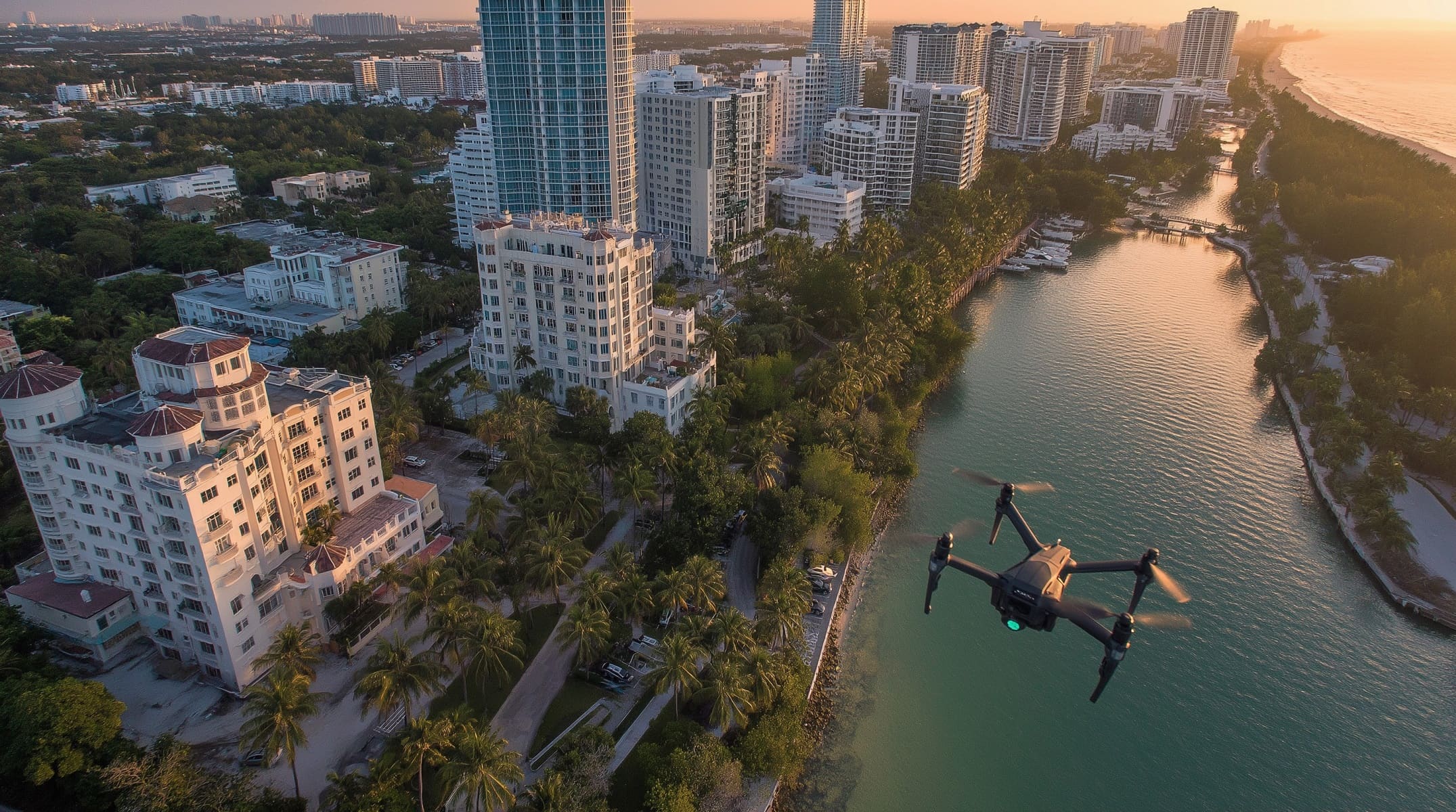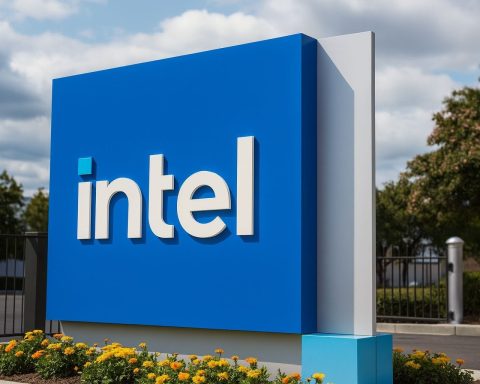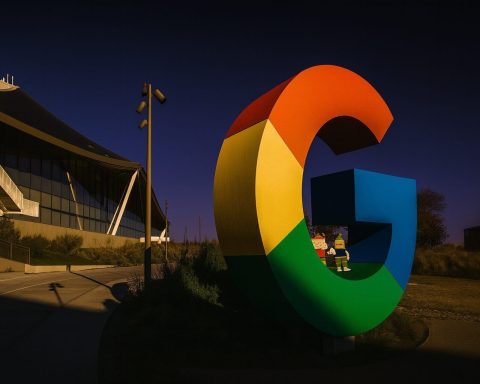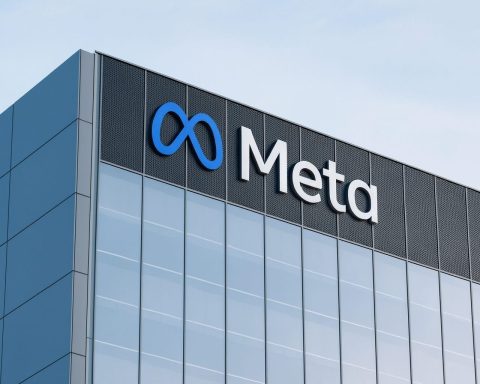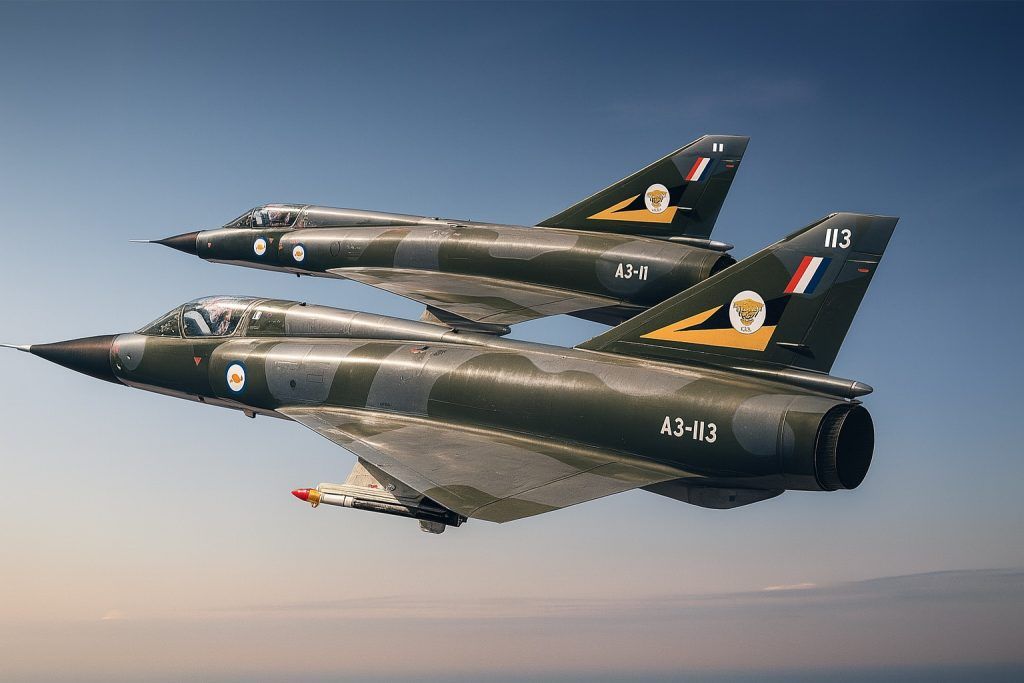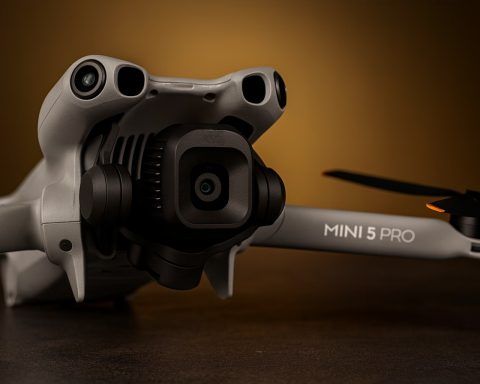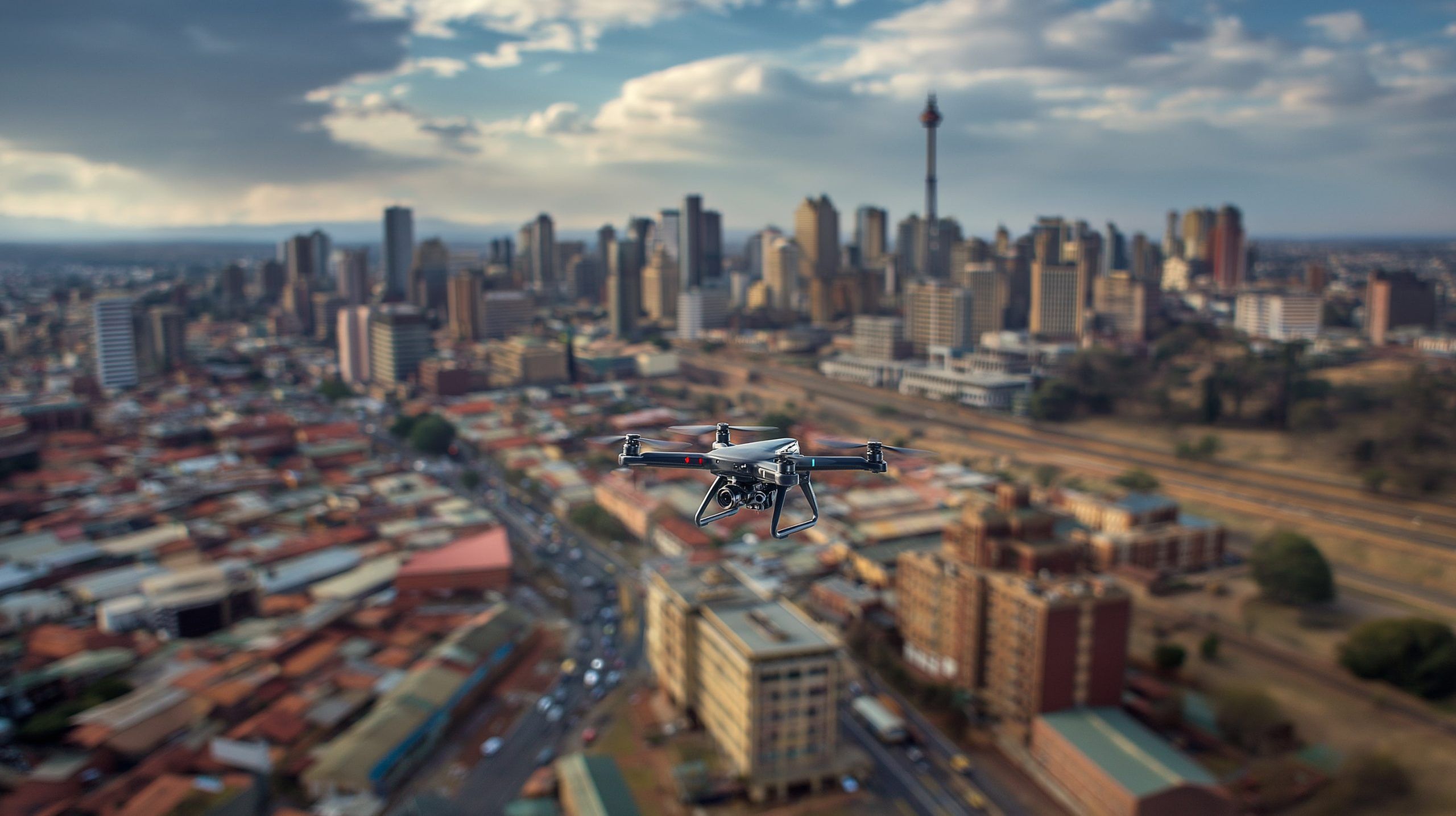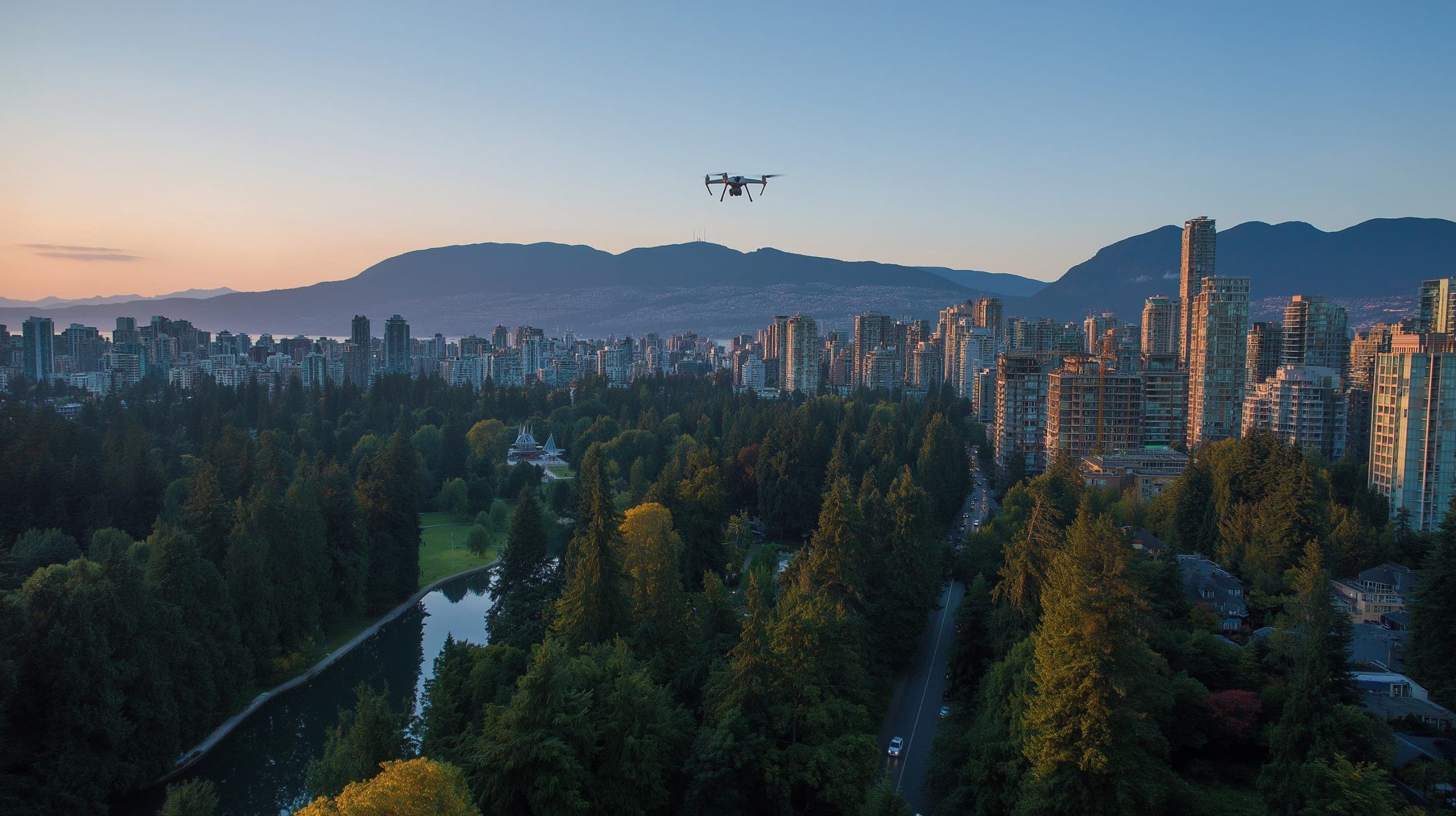- In Miami, any drone weighing more than 0.55 pounds (250 grams) must be registered with the FAA before flight, costs $5 online, and the ID number must be clearly marked on the drone.
- Remote ID is required for all drones that must be registered (over 250 g or used under Part 107), with compliance via built-in Remote ID, an external module, or by flying in FAA-recognized identification areas (FRIAs); enforcement began on March 16, 2024.
- During major sports events, the FAA imposes a stadium TFR of 3 miles radius up to 3,000 feet AGL, while the City of Miami also bans drones within 0.5 miles of large events.
- Drones operating in controlled airspace around Miami International Airport (MIA), Opa-locka (OPF), and Miami Executive (TMB) must obtain LAANC or FAA authorization, using DroneZone or LAANC apps.
- Florida’s Unmanned Aircraft Systems Act (F.S. §330.41) preempts most local drone regulations, centralizing flight rules at the state level, with 2025 updates increasing penalties and prohibiting weaponized or noncompliant drones.
- City of Miami Code §37-12 requires a permit for drone operations at city events, bans taking off or landing within 0.5 miles of large events, and imposes penalties including possible confiscation.
- Drones over 5 pounds cannot fly in City of Miami airspace unless the operator is a member of the Academy of Model Aeronautics (AMA), and the ordinance prohibits detachable cargo or weapons.
- Commercial filming on public property in Miami requires a film permit through FilMiami (and often a police detail), with night shoots typically needing an FAA waiver.
- Everglades National Park and Biscayne National Park prohibit recreational drones without special permission.
- Enforcement and penalties include FAA fines up to $32,666 per incident for serious violations, Florida offenses can be misdemeanors up to 1 year in jail and $1,000 fine, or felonies up to 5 years for serious offenses as of 2025, and City of Miami fines up to $500 per violation with possible drone impoundment.
Flying a drone in Miami offers stunning skyline views and ocean vistas, but it also comes with a web of laws at the federal, state, and local level. Violating these rules can lead to hefty fines or even criminal charges. This comprehensive 2025 update breaks down everything you must know before you fly – from FAA regulations and Florida state laws to City of Miami ordinances. We’ll cover registration, pilot certification, remote ID, airspace and no-fly zones, privacy rules, permits for parks/events, and penalties. By the end, you’ll know how to stay legal and safe when operating a drone in Miami’s skies.
Federal Drone Laws Applicable in Miami
All drone pilots in Miami are subject to U.S. Federal Aviation Administration (FAA) regulations. These nationwide rules include registration requirements, pilot qualifications, operational limits, and new remote identification mandates:
- FAA Registration: Any drone weighing over 0.55 lbs (250 grams) must be registered with the FAA before flight – this applies to both hobbyists and commercial operators [1]. Registration is done online (cost $5) and the ID number must be marked on the drone. (Drones under 250g used recreationally are exempt from registration, but if used commercially they require registration as well.)
- Recreational Pilot Requirements: If you’re flying just for fun (not for work), you fall under the FAA’s Exception for Recreational Flyers (49 USC 44809). You do not need a license, but you must pass the free TRUST safety test and carry the completion certificate [2]. Recreational pilots must follow safety rules such as flying only for hobby purposes, within visual line-of-sight, below 400 feet, and not interfering with manned aircraft [3] [4]. Importantly, if your flight will occur in certain controlled airspace near airports, you need prior authorization (more on that below).
- Commercial Pilot Requirements: If you’re flying for work, business, or any compensation, you are considered a commercial operator and must hold an FAA Remote Pilot Certificate (Part 107 license) [5]. To get this, you pass a FAA aeronautical knowledge exam. Part 107 pilots have additional privileges (and responsibilities), including the ability to apply for waivers for operations at night, over people, beyond visual line of sight, etc., if needed. Commercial operators must also register all drones they use, even under 250g [6] [7], and follow the Part 107 rules at all times.
- Remote ID Requirement: As of 2025, the FAA’s Remote ID rule is in effect nationwide. All drones that are required to be registered (i.e. >250g, or any drone used under Part 107) must comply with Remote ID broadcast requirements [8] [9]. This means your drone must either: have built-in Remote ID capability, use an external Remote ID broadcast module, or you must fly only at FAA-recognized identification areas (FRIAs). Starting March 16, 2024, the FAA began enforcing Remote ID – flying a non-compliant drone can result in enforcement action [10] [11]. In short, if your drone weighs over 250g or is used commercially, ensure it’s broadcasting Remote ID as required.
- Operational Rules and Limits: Under FAA rules, drones cannot be flown above 400 feet AGL (above ground level) in uncontrolled airspace, and must always yield right-of-way to manned aircraft [12]. Keep your drone within visual line-of-sight at all times [13] – no flying beyond where you can see it (unless you have a special waiver). Flying over people or moving vehicles is prohibited for most operations (Part 107 pilots may do so only if they meet strict Category 1-4 drone requirements or have a waiver; recreational flyers should avoid flying over non-participants entirely) [14] [15]. Additionally, never fly under the influence of drugs or alcohol and avoid hazardous weather conditions like high winds or low visibility [16]. Night flying is allowed only with proper precautions: Part 107 licensed pilots must have anti-collision lighting on the drone and have passed the nighttime flying knowledge training (new rules in 2021 allow night operations without a waiver if equipped and trained), while recreational flyers should also use lights and exercise extreme caution at night.
- Airspace Restrictions (Airports): Miami is a busy urban area with multiple airports, meaning much of the airspace is controlled. Drone flights in controlled airspace (Classes B, C, D, or surface E) – which includes areas around major airports – require prior FAA authorization for both recreational and commercial pilots [17]. For example, Miami International Airport (MIA) has Class B airspace over much of the city, and Opa-locka Executive Airport (OPF) and Miami Executive Airport (TMB) have Class D airspace. Fortunately, you no longer need to call the control tower; you can use the automated LAANC system (Low Altitude Authorization and Notification Capability) via smartphone apps to request near-instant approval for flights in permitted zones of controlled airspace [18]. Always check a map (e.g. FAA’s B4UFLY app) – if your flight area is within an airport’s airspace, get LAANC approval before you fly. Flying in these areas without clearance is illegal and dangerous.
- Temporary Flight Restrictions (Stadiums & VIPs): Federal rules establish temporary no-fly zones in certain scenarios. Notably, stadium TFRs restrict drones within a 3-mile radius and up to 3,000 ft above ground over stadiums during major sporting events (NFL, MLB, NCAA Division I football, etc., when seating capacity >30,000) [19]. This means during Miami Dolphins or Hurricanes games at Hard Rock Stadium, or Miami Marlins games at LoanDepot Park, drones are banned in that 3-mile circle from one hour before until one hour after the event. Additionally, security TFRs pop up for special events or VIP visits (e.g. if the U.S. President visits Miami). Always check Notices to Air Missions (NOTAMs/TFRs) via apps or FAA websites before flying – flying in a TFR zone can lead to serious federal penalties.
Florida State Drone Laws
Florida has enacted statewide drone laws that apply in Miami and everywhere else in the state. The Florida Legislature has sought to preempt local drone regulation and create uniform rules, while also addressing privacy, critical infrastructure, and law enforcement use of drones. Here are the key Florida drone laws and policies:
- State Preemption & Critical Infrastructure (F.S. §330.41): Florida’s “Unmanned Aircraft Systems Act” (originally HB 1027 in 2017) centralizes drone regulation at the state level [20]. It reserves all authority to regulate drone flight to the state, meaning cities and counties generally cannot enact their own flight rules (except where permitted by state law or FAA rules) [21]. This Act also makes it illegal to fly drones in certain sensitive areas. In Florida, it is a crime to knowingly or willfully fly a drone over or near a “critical infrastructure facility” such that it interferes with operations [22]. Critical infrastructure is defined broadly – including power plants, electrical substations, utilities, chemical plants, pipelines, wireless towers, prisons and jails, and hospitals (and as of 2025, the definition was expanded to include airports, military bases, and dams) [23]. Flying over or within a close distance of these without permission can lead to criminal charges. Florida updated this law in 2025 to increase penalties for violations (raising some offenses from misdemeanors to felonies) [24] [25]. Bottom line: avoid flying over critical infrastructure like PortMiami’s power grid, the Turkey Point nuclear plant, water treatment facilities, cellular towers, prisons, etc. – it’s against state law unless you have specific authorization.
- Weapons and Contraband (F.S. §330.411): Florida bans weaponizing drones. It is illegal to attach any weapons, firearms, explosives or destructive devices to a drone [26]. A 2025 law also explicitly outlawed drones modified to evade FAA remote ID or used to smuggle contraband (e.g. dropping drugs into prisons) [27] [28]. Operating a drone with any kind of weapon is a serious crime in Florida – never attempt to arm your drone, even as a “test” or you could face felony charges.
- Privacy and Surveillance (F.S. §934.50): Florida’s “Freedom from Unwarranted Surveillance Act” (SB 766 in 2015) protects privacy from drone intrusion. It is illegal in Florida to use a drone to capture images or video of privately owned property or people on that property where they have a reasonable expectation of privacy, without consent [29]. In other words, you generally cannot fly over someone’s backyard or home to record them without permission – doing so could lead to civil action or penalties. There are exceptions: the law allows certain legitimate uses despite incidental surveillance, such as by a person licensed in a business/profession (for example, a licensed roofer or insurance adjuster can use a drone to inspect a roof) as long as it’s within the scope of their work [30]. It also permits drones for aerial mapping, utility inspections, property appraisal, or delivery of cargo in compliance with FAA rules [31] [32]. But in general, respect privacy – do not conduct surveillance with your drone. If someone feels harassed or spied on, they can sue for injunction or damages under this law [33].
- Law Enforcement Drone Use: The same Florida surveillance law originally limited police use of drones – requiring a warrant for evidence gathering, except in emergencies like terrorism threats or missing person searches [34]. In 2021 and again in 2025, Florida amended the law to give law enforcement more leeway. Now police and public safety agencies can use drones for certain purposes such as crowd monitoring at large events, traffic management, crime scene analysis, and to protect gatherings of officials, as long as they adhere to any required guidelines (warrants may still be needed for prolonged surveillance of private property) [35]. Notably, Florida has prohibited law enforcement from using non-approved foreign-made drones – as of 2023 most agencies in Florida can no longer use drones made by manufacturers like DJI due to security rules, which has reshaped how police drone programs operate. For private drone pilots, just be aware that police may deploy their own drones at events or emergencies, and it’s illegal to interfere with them.
- State Parks and Managed Lands: Florida’s administrative code bans drones in many state-managed natural areas. Drones may not take off or land in Florida State Parks or state forests without special permission [36]. For example, drones are generally prohibited in Everglades National Park (federally managed) and in Florida State Parks like Oleta River or Bill Baggs Cape Florida. The Florida Department of Agriculture regulation (5I-4.003) similarly prohibits drones on state forest lands except at designated spots and with authorization [37]. Always check park rules – if you want to fly in a park, you likely need a Special Use Permit. (Note: National Parks across the U.S. have a blanket ban on recreational drone flights under NPS policy.)
Tip: Florida law explicitly allows local governments to pass ordinances dealing with nuisance, voyeurism, harassment, reckless endangerment, property damage, or other illegal acts by drone [38]. That means while cities cannot regulate airspace or flight paths, they can enforce laws against, say, peeping Tom drones or drones causing dangers. So, common sense still applies – if you harass people or endanger property with your drone, you could violate general laws (like reckless endangerment or stalking), even if there isn’t a drone-specific rule.
City of Miami Drone Ordinances and Policies
Beyond federal and state law, the City of Miami has its own ordinance regarding drones, primarily aimed at protecting large events and public safety. Enacted in late 2016, City of Miami Code §37-12 regulates when and where drones can be flown in city limits, especially during festivals and sporting events:
- No Drones Over Large Events: It is prohibited to launch or fly a drone within a 0.5-mile radius of any sporting event or large venue special event in the City of Miami when that event is taking place [39] [40]. This includes areas around major venues like Bayfront Park, Marlins Park (LoanDepot Park), Miami Marine Stadium, and the Calle Ocho Festival when an event is underway [41]. Essentially, if there’s a concert, festival, protest, or game attracting a big crowd in a Miami park or stadium, consider the airspace above and around it a no-fly zone (half-mile out) for drones. The city’s intent is to prevent injury to large gatherings – a drone crash into a crowd could cause serious harm [42]. This city rule complements the FAA’s broader 3-mile stadium TFR (which is time-limited); Miami’s ordinance is a constant local rule for city-sponsored or permitted events. Violating this can lead to your drone being impounded by police and fines imposed [43].
- City Permit Requirement: To fly a drone for certain activities in Miami, especially those involving city property or large events, you may need to apply for a permit from the city. Miami’s ordinance establishes an application process for drone use at special events [44] [45]. For example, if an event organizer or filmmaker wants to use a drone at a festival in a public park, they must submit an application at least 14 days in advance with details (pilot info, drone model/serial, purpose) [46]. The City Manager can impose conditions and fees, and permits are granted on a first-come, first-served basis with specific dates/times [47]. Flying at a city event without a permit is a violation. This permitting ensures officials know about the drone operation and can coordinate safety. (Note: This is separate from FAA authorization – even with city permission you still need FAA approval if in controlled airspace, and a licensed pilot if commercial.)
- Local Drone Specifications: Miami’s ordinance sets some local equipment rules: drones flown in the city cannot carry any detachable cargo or weapons, and generally should weigh 5 pounds or less [48]. Heavier drones (>5 lbs) can only be flown by members of a recognized aeromodeling organization (the ordinance mentions AMA – Academy of Model Aeronautics – membership) and still must follow all other rules [49]. Essentially, the city doesn’t want large or dangerous drones over public areas. Any drone modifications must have FAA approval and be noted in the city permit application [50].
- Enforcement: The City of Miami can enforce these rules through its Code Enforcement Board or civil court. Penalties can include fines (usually up to $500 per City Code §1-13) and confiscation of your drone [51]. If your drone is impounded, you’ll have a hearing opportunity, but unclaimed drones can be forfeited to the city after 60 days [52]. Police and fire-rescue are exempt from these restrictions when doing their jobs [53], and the ordinance explicitly does not bar any drone operations authorized by the FAA (so if you have an FAA waiver for a specific flight, the city ordinance will recognize that) [54].
It’s worth noting that Miami’s drone ordinance was crafted to “operate in conjunction” with FAA rules without preempting them [55]. Florida’s state preemption law largely prevents cities from regulating airspace, but Miami focused its law on where drones may take off/land during city events and requiring permits, which is within the city’s authority over local property and safety. Always check for any posted signs or local park rules as well – while Miami’s ordinance is the main city law, there may be additional park regulations (e.g. certain parks might ban drone flying when park is crowded or without prior notice).
What about other local jurisdictions? If you’re in the Greater Miami area, be aware neighboring municipalities have their own rules. For instance, Miami Beach requires a permit for any drone filming over the city for commercial purposes, and often requires a Miami Beach Police officer on-site during the shoot [56]. Miami-Dade County prohibits drone takeoffs/landings on county property (parks, etc.) without permission, as do some other South Florida cities. So if you venture outside City of Miami, always research the local city or county drone ordinances. However, for typical recreational flying in uncrowded areas, the main concerns will be FAA rules and state law.
No-Fly Zones and Airspace Tips for Miami
Miami’s dense airspace and critical facilities mean there are many location-specific restrictions to keep in mind. Here’s a rundown of places you cannot fly or must take extra precautions:
- Airports and Flight Paths: As mentioned, Miami International Airport’s Class B airspace covers much of the city. Never fly near airport approach/departure paths. MIA is one of the busiest airports – a drone straying into its airspace could cause a disaster. If you’re within about 5 miles of MIA (which includes Downtown, Miami Beach, Coral Gables, etc.), you are likely in controlled airspace that requires LAANC authorization at low altitudes [57]. The same goes for areas near Opa-locka Airport (OPF) in northern Miami-Dade and Miami Executive (TMB) in southwest Miami. Heliports (like on hospital roofs or the Miami Seaplane Base on Watson Island) also have small Class D airspaces – check your app. Always get clearance or simply choose another location to fly. A good practice is to stay well away from any airport or keep altitudes very low if you must fly near an airport with permission.
- Downtown & Class B Airspace: Downtown Miami and the Brickell area sit under MIA’s Class B shelves (which step down in altitude). Portions of Bayfront Park, for example, are in Class G at ground level but rise into Class B at higher altitudes [58]. Be very cautious flying in downtown – not only are there many FAA restrictions (you may need LAANC even for moderate altitudes), but GPS interference from skyscrapers is common. Always yield to police or news helicopters frequently operating in the city.
- Stadiums and Arenas:Hard Rock Stadium (though in Miami Gardens, not City of Miami) and LoanDepot Park (Marlins Park), FTX Arena (Miami Heat’s arena), and the Miami Grand Prix (when at Hard Rock) – all these fall under the FAA’s stadium TFR rule during events (3 nautical mile radius, 0–3,000 ft AGL) [59]. Additionally, City of Miami’s law bans drones within 0.5 miles of events at some of these venues at all times during the event [60]. In short: no drone flights during big games or concerts near those venues. If the Miami Heat are playing at home, don’t even think about flying by the arena.
- Critical Infrastructure Sites: Under Florida law, stay away from critical infrastructure facilities with your drone. In the Miami area, this means do not fly over places like Turkey Point Nuclear Plant, the Miami Port cargo terminals, water treatment plants, power substations, the downtown Courthouse or jail, etc., unless you have permission. The law forbids coming close enough to “interfere or cause a disturbance” to such facilities [61]. As a rule of thumb, keep a wide berth (several hundred yards at least) around utilities, industrial plants, and government secure facilities. Note that as of 2025, all airports are also defined as critical infrastructure in Florida [62] – so state law reinforces that you shouldn’t be flying near airports either (aligning with FAA rules).
- Hospitals and Helipads: Hospitals like Jackson Memorial or Mount Sinai operate helipads for medical helicopters. Drones should avoid these areas for safety – a drone strike could down an emergency helicopter. While not specifically listed in laws, interfering with emergency medical aircraft is extremely dangerous and likely covered under other federal laws.
- Emergency Scenes: Florida hasn’t explicitly outlawed drones at emergency scenes, but flying your drone at the scene of a fire, accident, or police operation is a bad idea. You could be obstructing first responders (which is illegal). Florida statutes allow agencies to enforce temporary flight restrictions for disaster areas. In practice, if you fly near a wildfire or crime scene, expect law enforcement to intervene. Always yield to public safety aircraft – if you see police or Coast Guard helicopters, drop altitude and land.
- Beaches and Crowded Areas: There’s no blanket rule against flying at the beach, but use common sense. South Beach, for example, can have dense crowds – flying over people is both prohibited (FAA) and dangerous. Miami Beach requires permits for commercial shoots, and even recreational pilots have been cited for creating a nuisance with drones over beachgoers. The same goes for crowded downtown streets or outdoor malls – avoid flying over uninvolved people. If you want beach shots, go early in the morning when beaches are empty, and always yield to shore birds (it’s illegal to harass wildlife with a drone).
- Parks: City of Miami has many parks where drone flying is allowed if not during an event. However, Miami-Dade County parks have a rule that generally prohibits takeoff or landing of drones on county park property without permission (per county ordinance in some jurisdictions) [63]. It’s wise to check with park management. Some parks have designated model aircraft fields (for example, Amelia Earhart Park in Hialeah has a model airfield). If a park is quiet and you’re not near an airport, you can likely fly recreationally – but at the first sign of an event setting up or a big crowd, pack it up. Also, no drones in National Parks: remember that Everglades National Park (just west of Miami) and Biscayne National Park (the bay and islands) are off-limits to drones without special permission, due to National Park Service regulations.
Permits and Special Permissions in Miami
Depending on why and where you are flying, you might need additional permits in Miami:
- Filming and Commercial Shoots: If you plan to use a drone for commercial filming or photography (e.g. a movie, commercial, real estate shoot) on public property in Miami, you’ll need a film permit from the City or County. Miami’s Office of Film and Entertainment (through FilMiami) coordinates permits for the City of Miami, Miami Beach, and Miami-Dade County. All drone filming on public property requires a permit and often a police detail [64]. For example, to film over a City of Miami park or downtown area, you’d apply for a permit outlining locations, dates, times, and you must have insurance. Miami-Dade County specifically notes: no drone filming within 5 nautical miles of an airport (which covers most of the urban area) without special arrangements [65], and night drone filming requires an FAA waiver [66]. They also typically require the set to be “closed” (no random people underneath). If you’re a freelance photographer doing a simple shoot, also be mindful that even wedding photography with a drone in a public park technically might need a permit. Always check with the film office if in doubt.
- Events: If you are an event organizer or participant and want to have a drone at a special event in the city, you must go through the city’s special event permitting process for drones [67] [68] (as described in City Code §37-12). This involves the application we discussed (14 days prior, etc.). Without approval, drones are barred at events. Even with approval, you’d likely be required to have a licensed pilot, insurance, and coordination with police. The city may impose special safety conditions depending on the event [69] (for instance, they might only allow flight at certain altitudes or times, or require a safety net in certain areas).
- Private Property: Flying over private property doesn’t require a permit per se, but you should have the property owner’s permission to take off/land on private land. Under FAA rules, the airspace is public, but if you hover low over someone’s house without permission, you risk privacy violations or even trespass/nuisance claims. If you’re hired to do a roof inspection or real estate photos, make sure the homeowner or property manager is aware and consents. Florida’s proposed 2025 legislation (SB 1422, not enacted in final form) would have allowed homeowners to take “reasonable force” against drones under 500 feet [70] [71] – while that did not become law [72] [73], it reflects how seriously people take privacy. To be safe, don’t fly low over homes without asking.
- Airspace Authorizations: One type of “permission” worth reiterating is FAA airspace authorization. Many scenic spots in Miami (e.g. Bayfront Park, South Beach) are in controlled airspace. Recreational flyers can use the FAA DroneZone or LAANC to request airspace authorization as needed [74]. Part 107 pilots must do this as well for any controlled airspace. This is a quick online process for most areas – for example, around MIA the FAA might authorize up to 100 feet in some grids, higher in others. Always secure that digital clearance before flying in those zones.
Enforcement and Penalties
Both federal and local authorities are actively enforcing drone laws in the Miami area. Penalties range from fines to jail time, depending on the violation:
- FAA Enforcement: The FAA can assess civil fines up to $32,666 per incident for serious violations of its regulations (and higher for multiple violations or continuing violations) – for example, flying in restricted airspace and endangering aircraft [75] [76]. If you operate in a reckless manner (say, a drone collision with a manned aircraft), you could also face criminal charges under federal law, with potential imprisonment. Shooting down a drone is also a federal crime (aircraft sabotage) punishable by prison [77] – so don’t attempt to disable others’ drones, and conversely, if someone shoots at your drone, they’re breaking the law. The FAA often works with local law enforcement in drone incidents; for instance, if you fly near an airport or over a stadium, local police may detain you and the FAA can then levy fines or revoke your drone license. Example: In 2021, a Florida man was fined $ Drone pilot enforcement news – (hypothetical example) – for flying a drone that interfered with Tampa police helicopters; similar actions can and will be taken in Miami for egregious violations.
- Florida State Penalties: Under state law, many drone-related offenses are misdemeanors or felonies. Flying over critical infrastructure (like a prison or power plant) without permission is generally a first-degree misdemeanor, punishable by up to 1 year in jail and $1,000 fine – but if you drop contraband or cause harm, charges can escalate. The 2025 law increased some offenses to third-degree felonies (up to 5 years in prison) – for example, a repeat offense of flying over critical infrastructure after being warned, or flying a weaponized drone [78] [79]. Illegal surveillance with a drone (privacy violations) can result in civil lawsuits and evidence obtained illegally will be thrown out of court. While a homeowner cannot legally shoot down your drone, they can sue if you infringe on privacy. And if you interfere with law enforcement or rescue operations using a drone, you could be charged under general obstruction laws.
- City of Miami Penalties: Violating the Miami drone ordinance (flying in prohibited areas like the half-mile event zone or without a permit) is a municipal code violation. The standard penalty is a fine up to $500 per violation and/or up to 60 days in jail (though jail is rare for code violations) [80]. More likely, your drone will be confiscated on the spot by police or park rangers if you’re caught. The city will hold the drone until you appear before the Code Enforcement Board or a hearing officer [81]. You’ll have to pay any fines and possibly storage fees to get it back. If you don’t contest or show up, the city can keep (forfeit) your drone after 60 days [82]. Needless to say, that’s a fast way to lose an expensive DJI drone. It’s better to abide by the rules than try to argue after the fact.
- Insurance and Liability: Note that if your drone causes injury or property damage, you can be held liable in civil court. Miami’s permit process requires operators to have liability insurance and to indemnify the city for any damage [83] [84]. Even as a hobbyist, it’s wise to carry drone insurance or be part of organizations like AMA that offer coverage. If your drone crashes through a window or injures someone, you may be on the hook for medical bills and repairs. And causing a major incident (like a power outage by hitting lines, or an aircraft emergency) could result in enormous damages. In summary, fly responsibly or you could pay dearly.
Current and Future Developments
Drone laws continue to evolve. Here are a few recent and upcoming changes that could affect Miami drone pilots:
- 2025 Florida Law Update: As discussed, Florida passed a law (HB 1121 in 2025) effective October 1, 2025 that enhances drone regulations [85]. It expanded the definition of critical infrastructure (covering more sites like airports and wireless facilities) [86], increased penalties for illegal drone operations near those sites [87], and explicitly banned drones that don’t comply with Remote ID or that carry weapons/explosives [88]. It also formally allows law enforcement to use drones for crowd control and security monitoring with certain limits [89]. One controversial provision that was not adopted would have let private property owners use “reasonable force” against trespassing drones [90] [91] – lawmakers dropped that due to conflict with FAA rules (shooting down drones remains illegal federally) [92] [93]. However, the mere proposal shows the direction some states are headed regarding property owners’ rights in low-altitude airspace. We’ll need to watch how this develops in future sessions.
- FAA Regulatory Changes: At the federal level, expect further integration of drones into airspace. The FAA’s upcoming Reauthorization Act (expected in 2024/25) may introduce new provisions – possibly funding for drone traffic management systems, or rules for higher-altitude operations. Remote ID is just the start; the FAA is also working on rules for drone flights at night and over people (which they updated in 2021) and eventually beyond visual line of sight (BVLOS) rules. By 2025, operations like drone deliveries (e.g. Amazon/Walmart) are being tested in parts of the country, and Miami could see pilot programs soon. If drone delivery corridors open, expect specific routes or altitudes designated for those drones – hobbyists will need to stay clear.
- Local Drone Initiatives: Miami is a tech-forward city and has shown interest in drone technology for public safety and urban planning. Don’t be surprised if Miami or Miami-Dade launch “drone zones” or drone parks for hobbyists in the future to provide safe places to fly. Also, law enforcement in Miami is using drones for tasks like monitoring traffic during Ultra Music Festival or searching for missing persons in the Everglades. As these programs expand, authorities may issue more public advisories about where not to fly during certain operations (e.g. a NOTAM when Miami Police run a drone surveillance during New Year’s Eve). Stay alert to local news and city announcements regarding drone use.
In summary, drone operators in Miami need to navigate a layered set of rules. Always start with FAA regulations (which cover the big safety issues like airspace, altitude, and certifications), then layer on Florida state laws (privacy, critical sites), and finally check the local City of Miami rules (no events, permits needed). When in doubt, err on the side of caution – it’s better to ask for permission than forgiveness with drones. Miami offers incredible views for drone photography, but with that privilege comes responsibility. Fly safe, respect others’ privacy, and follow the laws, and you’ll avoid trouble while capturing those beautiful Miami shots.
Summary Table: Miami Drone Law Highlights (Recreational vs. Commercial)
To wrap up, here’s a quick-reference summary of key drone requirements in Miami, comparing rules for Recreational Hobbyists and Commercial (Part 107) Operators:
| Aspect | Recreational Flyers (Hobby Use) | Commercial Pilots (Part 107 Licensed) |
|---|---|---|
| FAA Registration | Required if drone >0.55 lbs (250 g) [94] (drones under 250g used purely for fun are exempt). Each owner may use one registration for all their hobby drones. | Required for all drones >0.55 lbs [95] (and practically all Part 107 drones fall in this category). Each drone must be individually registered to the business or pilot [96] [97]. |
| Pilot Certification | No license needed. Must take FAA TRUST safety test (free online) and carry completion certificate [98]. Follow the 49 USC 44809 model aircraft rules and any CBO guidelines. Minimum age 13 to register a drone (no age limit to fly, but youth should be supervised). | FAA Part 107 Remote Pilot Certificate required to fly for work [99]. Must be at least 16 and pass FAA’s aeronautical knowledge exam. License must be renewed every 24 months via online training or test. Pilot must have certificate on hand when operating. |
| Allowed Operations | Daylight only (twilight with anti-collision lights OK). Visual-line-of-sight (VLOS) only. Cannot fly over people or moving vehicles (unless part of your flying group) [100]. Maximum altitude 400 ft AGL (or within 400ft of a structure) [101]. Must yield right-of-way to all manned aircraft at all times [102]. No careless or reckless flying. | Mostly the same baseline operational rules: VLOS, daylight (night with anti-collision lights allowed under 2021 rules), generally 400 ft AGL limit [103], don’t fly over people without meeting Category 1-4 drone criteria or a waiver. Part 107 pilots can apply for waivers for operations like flying at night (no longer needed as of 2021 update if you have lights and training), over people, beyond line of sight, etc. All operations must be in accordance with Part 107 rules unless a specific FAA waiver or exemption is obtained. |
| Airspace & LAANC | Class G (uncontrolled) airspace is OK to fly without telling anyone (just follow rules). Controlled airspace (Classes B, C, D, E) around airports requires authorization even for hobbyists [104]. Recreational flyers can use LAANC or the FAA DroneZone to request airspace authorization digitally [105]. (The old requirement to notify airports if within 5 miles is no longer in effect; use LAANC instead.) Must obey all Temporary Flight Restrictions (e.g. stadium TFRs) [106]. | Must obtain LAANC or FAA airspace authorization for any operations in controlled airspace [107]. Part 107 pilots use LAANC via apps or FAA DroneZone to get near-instant approvals in many areas. Can also apply for specific ATC authorizations or wide-area waivers for frequent operations. Must check NOTAMs/TFRs before flight – prohibited from flying in security TFRs (VIP visits, stadiums during games, disaster areas, etc.) [108]. |
| Remote ID Compliance | Yes, if drone is 250g or more. All drones that require registration must broadcast Remote ID as of Sept 2023 [109]. Exception: drones <250g flown purely recreationally do not require Remote ID since they don’t require registration [110]. (But if that sub-250g drone is ever used under Part 107, it must be registered and then needs Remote ID.) Pilots can comply via Standard Remote ID built-in, add-on module, or flying at an FRIA field [111] [112]. | Yes, for all Part 107 operations. Essentially 100% of commercial drones must have Remote ID broadcasting when flying, because Part 107 requires even sub-250g drones to be registered individually [113] [114]. Standard Remote ID or a broadcast module is needed on each aircraft. (Operations in FAA-Recognized Identification Areas are an option, but those are primarily for model clubs – most commercial work will not occur in FRIAs.) Enforcement began March 16, 2024, so non-compliance can lead to FAA action [115]. |
| State Law Restrictions | Subject to Florida laws: No surveillance/photography of people’s private property without consent (reasonable expectation of privacy) [116]. No flying over critical infrastructure sites (prisons, power plants, etc.) or interfering with them [117] – mostly this will affect recreational flyers inadvertently exploring; don’t fly near these sensitive areas. No weapon or firearm on drone [118]. Cannot harass people or wildlife (existing harassment laws apply). Also, no takeoffs/landings in state parks or management areas without permit [119]. | Same state laws apply to commercial operators. However, Florida law provides some exceptions for licensed professionals doing legitimate work – e.g. a licensed real estate broker or roofer can capture images of a property as part of their job even if neighbors’ property is in view [120]. Commercial ops must be careful near critical facilities – e.g. doing drone inspection for a cell tower is fine (allowed by law) [121], but flying over a prison or port for a shot could violate state law without coordination. All the prohibitions on weapons, privacy, and parks apply equally. |
| Local Miami Rules | City of Miami Ordinance: No drones within 0.5-mile of large public events or stadiums during events (city parks, Bayfront, Marlins Park, etc.) [122] [123]. If flying in city for special events, must obtain a permit in advance [124]. Drones over 5 lbs not allowed unless AMA member; no drone can carry weapons or payloads [125]. These rules apply to all hobby flights in city limits. (Recreational hobbyists flying on a normal day in a park with no event are generally fine under city code, but always yield to any official who advises about local rules.) | City of Miami Ordinance: The same no-fly event zones and permit requirements apply [126] – commercial operators are typically the ones applying for permits to film events. Commercial filming on Miami-Dade or City property requires film permits and often a police officer present [127]. Miami Beach has its own permit rules for aerial filming. In short, any commercial drone activity in public spaces in Miami needs coordination with local authorities. Violating city rules can lead to fines and drone confiscation for businesses just as for hobbyists [128] (and could jeopardize your client/project, so always get the proper permits). |
| Penalties for Violations | FAA: Warning or fines up to $several thousand per violation; extreme cases (reckless endangerment of aircraft) can lead to criminal charges [129]. Florida: Misdemeanor charges (up to 1 year jail) for basic infractions like critical infrastructure overflight; felonies (up to 5 years) for serious offenses (weaponized drones, delivering contraband) [130]. City: Fines up to $500 and drone impounded for ordinance violations [131]. Most common outcome for a hobbyist caught flying irresponsibly is confiscation of the drone and a fine – and being kicked out of the area. | FAA: In addition to fines (and they do fine businesses), Part 107 pilots can have their license suspended or revoked for violations, jeopardizing your livelihood. Companies have been fined $10,000+ for unauthorized flights. Florida: Same criminal penalties as left – being a business doesn’t shield you from arrest if you, say, fly a drone over a packed football stadium or snoop on someone. City: Fines/impound as well. Also, negative publicity and liability – a commercial operator will face lawsuits if their drone injures someone. Always conduct a risk assessment and obey the regs to avoid penalties and legal trouble. |
Sources: Official FAA regulations and guidance [132] [133]; Florida Statutes §§330.41, 330.411, 934.50 [134]; City of Miami Code §37-12 [135] [136]; FAA & state websites and local ordinances as linked above.
References
1. uavcoach.com, 2. uavcoach.com, 3. www.fdot.gov, 4. www.fdot.gov, 5. uavcoach.com, 6. www.faa.gov, 7. www.faa.gov, 8. www.faa.gov, 9. www.faa.gov, 10. drones.princeton.edu, 11. www.faa.gov, 12. www.fdot.gov, 13. www.fdot.gov, 14. www.fdot.gov, 15. www.fdot.gov, 16. www.fdot.gov, 17. uavcoach.com, 18. uavcoach.com, 19. www.fdot.gov, 20. uavcoach.com, 21. uavcoach.com, 22. www.fdot.gov, 23. floridapolitics.com, 24. www.flsenate.gov, 25. floridapolitics.com, 26. www.fdot.gov, 27. floridapolitics.com, 28. floridapolitics.com, 29. uavcoach.com, 30. www.fdot.gov, 31. www.fdot.gov, 32. www.fdot.gov, 33. uavcoach.com, 34. uavcoach.com, 35. floridapolitics.com, 36. uavcoach.com, 37. uavcoach.com, 38. uavcoach.com, 39. www.assoc-law.com, 40. www.assoc-law.com, 41. www.assoc-law.com, 42. www.assoc-law.com, 43. www.assoc-law.com, 44. www.assoc-law.com, 45. www.assoc-law.com, 46. www.assoc-law.com, 47. www.assoc-law.com, 48. www.assoc-law.com, 49. www.assoc-law.com, 50. www.assoc-law.com, 51. www.assoc-law.com, 52. www.assoc-law.com, 53. www.assoc-law.com, 54. www.assoc-law.com, 55. www.assoc-law.com, 56. www.filmiami.org, 57. uavcoach.com, 58. uavcoach.com, 59. www.fdot.gov, 60. www.assoc-law.com, 61. www.fdot.gov, 62. floridapolitics.com, 63. uavcoach.com, 64. www.filmiami.org, 65. www.filmiami.org, 66. www.filmiami.org, 67. www.assoc-law.com, 68. www.assoc-law.com, 69. www.assoc-law.com, 70. dronexl.co, 71. dronexl.co, 72. floridapolitics.com, 73. floridapolitics.com, 74. uavcoach.com, 75. dronexl.co, 76. dronexl.co, 77. dronexl.co, 78. www.flsenate.gov, 79. floridapolitics.com, 80. www.assoc-law.com, 81. www.assoc-law.com, 82. www.assoc-law.com, 83. www.assoc-law.com, 84. www.assoc-law.com, 85. floridapolitics.com, 86. floridapolitics.com, 87. www.flsenate.gov, 88. floridapolitics.com, 89. floridapolitics.com, 90. floridapolitics.com, 91. floridapolitics.com, 92. dronexl.co, 93. dronexl.co, 94. uavcoach.com, 95. uavcoach.com, 96. www.faa.gov, 97. www.faa.gov, 98. uavcoach.com, 99. uavcoach.com, 100. www.fdot.gov, 101. www.fdot.gov, 102. www.fdot.gov, 103. www.fdot.gov, 104. uavcoach.com, 105. uavcoach.com, 106. www.fdot.gov, 107. uavcoach.com, 108. www.fdot.gov, 109. www.faa.gov, 110. www.faa.gov, 111. www.faa.gov, 112. www.faa.gov, 113. www.faa.gov, 114. www.faa.gov, 115. drones.princeton.edu, 116. uavcoach.com, 117. www.fdot.gov, 118. www.fdot.gov, 119. uavcoach.com, 120. www.fdot.gov, 121. www.fdot.gov, 122. www.assoc-law.com, 123. www.assoc-law.com, 124. www.assoc-law.com, 125. www.assoc-law.com, 126. uavcoach.com, 127. www.filmiami.org, 128. www.assoc-law.com, 129. dronexl.co, 130. floridapolitics.com, 131. www.assoc-law.com, 132. uavcoach.com, 133. www.faa.gov, 134. www.fdot.gov, 135. www.assoc-law.com, 136. uavcoach.com
